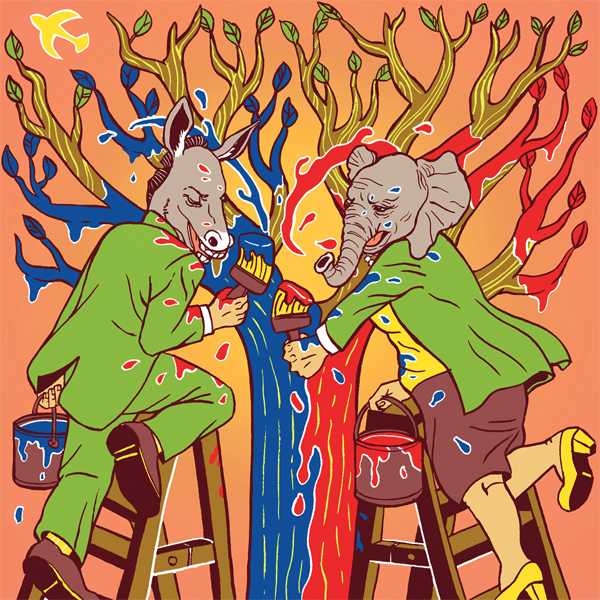Albuquerque’s expansion is causing political consternation. City councilors voted in favor of a plan on Jan. 19 that would eliminate Isaac Benton’s District 3—and his seat on the Council—after the 2013 election. It would also create a new seat on the Southwest Mesa. Benton represents Downtown, Barelas and the University area, including a slice of the Westside along Central. His district would be carved up, with much of it added to the North Valley district and a chunk going east to the Nob Hill district.The vote took place at a Committee of the Whole meeting. All nine councilors sit on the committee. It will be voted on again at a full Council meeting Wednesday, Feb. 22. Then it will head to the mayor’s desk for signature.Democrat councilors have said during debate that the move is politically motivated and intended to dilute the traditionally left-leaning power base of the Central corridor. “It’s politics," Councilor Debbie O’Malley said. Republicans have an edge and can “shore up their districts and precincts for the next decade."On what has become a routine 5-4 vote split down party lines, the plan was approved, with conservative Councilors Dan Lewis, Brad Winter, Michael Cook, Trudy Jones and Don Harris thumping liberal Councilors Rey Garduño, Benton, O’Malley and Ken Sanchez. "It is not in the best interest of the city,” O’Malley said. She urged her peers to look more closely at the other eight options before them. One would have eliminated right-leaning Councilor Cook’s Northeast Heights District instead.According to New Mexico law, Council boundaries are redrawn based on population shifts every 10 years. After Census results came in, it was determined that each of Albuquerque’s nine districts should contain about 50,000 people. As things stand, two of the Westside districts have nearly twice that number. The Council has to maintain an odd number of members to break ties. According to the City Charter, more population growth would be required to add two districts.The law also says minority voting rights should be protected, districts should be compact and established neighborhoods shouldn’t be broken up. The approved plan would make O’Malley’s district in the North Valley “the size of a small nation,” she said. It would be too large and too diverse, she added, to be fairly represented. A large contingent of supporters at the meeting agreed, saying the Downtown, Barelas and University neighborhoods should not be combined with rural areas of the North Valley. Democrat councilors argue this will impact funding to maintain infrastructure and diminish the political influence of the historic neighborhoods that tend to include more minorities. “A great city preserves its historical neighborhoods,” restaurateur Terry Keene of Artichoke Café said during public comment.Michael Montoya of the SouthWest Organizing Project served as chair of the Albuquerque Redistricting Committee. He said moving Benton’s district is not a good idea because it would divide historic communities of interest. Cook’s district covers a section of the Northeast Heights near Uptown. Under the alternate plan, his area would be added primarily to Councilor Garduño’s adjacent district.A small number of mid-Heights residents also spoke against this plan, saying their voice will get lost if they’re tacked onto Garduño’s much more culturally diverse Nob Hill and east Central region. Councilor Lewis contended that eliminating Benton’s District 3 makes the most sense for the city because it’s adjacent to the area that needs a new seat. It’s a practical plan, he said, because District 3 already covers a small portion of the southern Westside. "How is this political? There is no intention to district anyone out," Lewis said. Westside residents made it clear during the hearings that they did not want any of their three districts to cross the river, he added. Lewis said he would discuss other options. In June 2011, the New Mexico chapter of the American Civil Liberties Union filed a lawsuit on behalf of about 170,000 Westside residents to try to force the city to finish redistricting before the October election. The ACLU argued the Westside was grossly underrepresented and the citizens’ votes were watered down. The Council said it postponed redistricting because Census data was released late and there was not enough time to carefully consider the issue before Election Day. State District Judge Nan Nash ruled that the city could take up the process later.Mayor Richard Berry will have to sign whatever final plan is passed by the Council before it can go into effect. It’s unclear whether Berry would veto a proposal if there is considerable public opposition.“As Mayor it is my hope that the City Council will bring me a reasonable redistricting plan that I can sign," he said in an email exchange with the Alibi . "I’m confident the City Council will take into consideration the wealth of input, from the community, received during multiple public meetings.”





